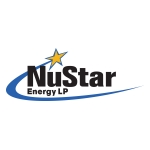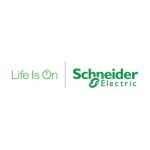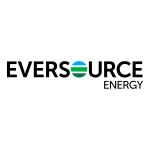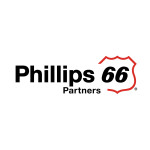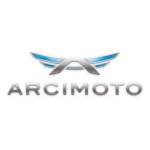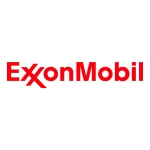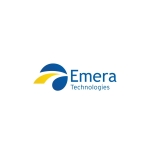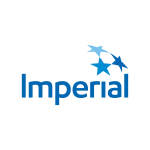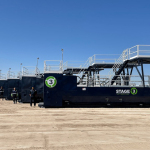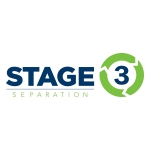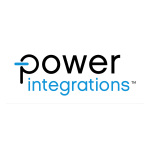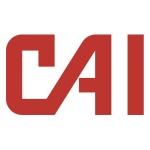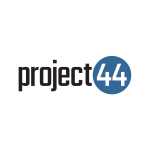-
Reported a first-quarter loss of $654 million or $1.49 per share; adjusted loss of $509 million or $1.16 per share
-
Financial and operating performance impacted by severe winter storms
-
Recognized for exemplary 2020 safety performance in Refining, Midstream and Chemicals
-
Recently started renewable diesel production at San Francisco Refinery
-
Continued to advance lower-carbon initiatives
HOUSTON--(BUSINESS WIRE)--Phillips 66 (NYSE: PSX), a diversified energy manufacturing and logistics company, announces a first-quarter 2021 loss of $654 million, compared with a loss of $539 million in the fourth quarter of 2020. Excluding special items of $145 million, the company had an adjusted loss of $509 million in the first quarter, compared with a fourth-quarter adjusted loss of $507 million.
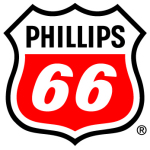
“Our first-quarter results reflect the impact of severe winter storms in the Central and Gulf Coast regions, as well as the ongoing COVID-19 pandemic,” said Greg Garland, Chairman and CEO of Phillips 66. “We realized lower utilization and higher costs across our businesses. We safely resumed operations following storm-related downtime and performed multiple turnarounds in the first quarter. We are proud of our employees and their commitment to operating excellence, particularly during these challenging times.
“We continued to execute our strategy despite these challenges. Earlier this month we commenced renewable diesel production at the San Francisco Refinery with the completion of the diesel hydrotreater conversion. Additionally, the South Texas Gateway Terminal was completed, and we advanced construction of the C2G Pipeline. We also published our inaugural Human Capital Management Report, which provides a comprehensive look at our approach to building a high-performing organization.
“We remain committed to a secure, competitive and growing dividend. In the first quarter, we paid $394 million in dividends to shareholders and repaid $500 million of debt. We will continue to take a disciplined approach to capital allocation, including debt repayment, as cash flow recovers.”
Midstream
|
Millions of Dollars
|
|
Pre-Tax Income
|
|
Adjusted Pre-Tax Income
|
|
Q1 2021
|
Q4 2020
|
|
Q1 2021
|
Q4 2020
|
Transportation
|
$
|
7
|
97
|
|
206
|
196
|
NGL and Other
|
35
|
85
|
|
36
|
86
|
DCP Midstream
|
34
|
41
|
|
34
|
41
|
Midstream
|
$
|
76
|
223
|
|
276
|
323
|
Midstream first-quarter 2021 pre-tax income was $76 million, compared with $223 million in the fourth quarter of 2020. Midstream results in the first quarter included a $198 million impairment resulting from Phillips 66 Partners’ decision to exit the Liberty Pipeline project, as well as $2 million in maintenance and repair costs resulting from the winter storms. Fourth-quarter results included $96 million of impairments related to Phillips 66 Partners’ investments in two crude oil logistics joint ventures, $3 million of hurricane-related costs and $1 million of pension settlement expense.
Transportation first-quarter adjusted pre-tax income of $206 million was $10 million higher than the fourth quarter. The increase was primarily due to lower operating costs and higher equity earnings, partially offset by decreased volumes.
NGL and Other adjusted pre-tax income was $36 million in the first quarter, compared with $86 million in the fourth quarter. The decrease was mainly due to higher operating costs resulting from the winter storms.
The company’s equity investment in DCP Midstream, LLC generated first-quarter adjusted pre-tax income of $34 million, a $7 million decrease from the prior quarter, resulting from the winter storms.
Chemicals
|
Millions of Dollars
|
|
Pre-Tax Income
|
|
Adjusted Pre-Tax Income
|
|
Q1 2021
|
Q4 2020
|
|
Q1 2021
|
Q4 2020
|
Olefins and Polyolefins
|
$
|
145
|
204
|
|
174
|
216
|
Specialties, Aromatics and Styrenics
|
26
|
15
|
|
27
|
13
|
Other
|
(17)
|
(26)
|
|
(17)
|
(26)
|
Chemicals
|
$
|
154
|
193
|
|
184
|
203
|
The Chemicals segment reflects Phillips 66’s equity investment in Chevron Phillips Chemical Company LLC (CPChem). Chemicals first-quarter 2021 pre-tax income was $154 million, compared with $193 million in the fourth quarter of 2020. Chemicals results in the first quarter included a reduction to equity earnings of $30 million for maintenance and repair costs resulting from the winter storms. Fourth-quarter results included a reduction to equity earnings of $21 million for pension settlement expense and $1 million of hurricane-related costs, partially offset by a $12 million benefit from lower-of-cost-or-market inventory adjustments.
CPChem’s Olefins and Polyolefins (O&P) business contributed $174 million of adjusted pre-tax income in the first quarter, compared with $216 million in the fourth quarter. The $42 million decrease was primarily due to winter storm impacts, which resulted in decreased production and higher utility costs. These items were partially offset by higher margins primarily due to tight supplies, low inventory levels and continued strong demand. Global O&P utilization was 79% for the quarter.
CPChem’s Specialties, Aromatics and Styrenics (SA&S) business contributed first-quarter adjusted pre-tax income of $27 million, compared with $13 million in the fourth quarter. The increase primarily reflects improved margins.
Refining
|
Millions of Dollars
|
|
Pre-Tax Loss
|
|
Adjusted Pre-Tax Loss
|
|
Q1 2021
|
Q4 2020
|
|
Q1 2021
|
Q4 2020
|
Refining
|
$
|
(1,040)
|
(1,113)
|
|
(1,026)
|
(1,094)
|
Refining had a first-quarter 2021 pre-tax loss of $1.0 billion, compared with a pre-tax loss of $1.1 billion in the fourth quarter of 2020. First-quarter results included $14 million of maintenance and repair costs resulting from the winter storms. Fourth-quarter results included $22 million of hurricane-related costs and $3 million of pension settlement expense, partially offset by $6 million of favorable U.K. R&D credits.
Refining had an adjusted pre-tax loss of $1.0 billion in the first quarter, compared with an adjusted pre-tax loss of $1.1 billion in the fourth quarter. Higher realized margins in the first quarter were largely offset by increased turnaround costs, as well as higher utilities resulting from the winter storms. First-quarter realized margins were $4.36 per barrel, up from $2.18 in the prior quarter, due to an increase in market crack spreads and the sale of electricity to help meet demand in the Texas market, partially offset by lower product differentials and higher RIN costs.
Pre-tax turnaround costs for the first quarter were $192 million, compared with fourth-quarter costs of $76 million. Crude utilization rate was 74% in the first quarter, up from 69% in the fourth quarter. Clean product yield was 82% in the first quarter.
Marketing and Specialties
|
Millions of Dollars
|
|
Pre-Tax Income
|
|
Adjusted Pre-Tax Income
|
|
Q1 2021
|
Q4 2020
|
|
Q1 2021
|
Q4 2020
|
Marketing and Other
|
$
|
211
|
180
|
|
211
|
181
|
Specialties
|
79
|
52
|
|
79
|
40
|
Marketing and Specialties
|
$
|
290
|
232
|
|
290
|
221
|
Marketing and Specialties (M&S) first-quarter 2021 pre-tax income was $290 million, compared with $232 million in the fourth quarter of 2020. Fourth-quarter results included a $14 million benefit to equity earnings from a lower-of-cost-or-market inventory adjustment, partially offset by $2 million of hurricane-related costs and $1 million of pension settlement expense.
Adjusted pre-tax income for Marketing and Other was $211 million in the first quarter, an increase of $30 million from the fourth quarter. The increase was due to higher domestic margins, partially offset by lower international margins. Refined product exports in the first quarter were 204,000 barrels per day (BPD).
Specialties generated first-quarter adjusted pre-tax income of $79 million, up from $40 million in the fourth quarter, largely due to improved base oil and finished lubricant margins.
Corporate and Other
|
Millions of Dollars
|
|
Pre-Tax Loss
|
|
Adjusted Pre-Tax Loss
|
|
Q1 2021
|
Q4 2020
|
|
Q1 2021
|
Q4 2020
|
Corporate and Other
|
$
|
(251)
|
(226)
|
|
(251)
|
(235)
|
Corporate and Other first-quarter 2021 pre-tax costs were $251 million, compared with pre-tax costs of $226 million in the fourth quarter of 2020. Fourth-quarter pre-tax costs included a $9 million gain on an asset sale.
The $16 million increase in Corporate and Other adjusted pre-tax costs in the first quarter was mainly driven by timing of charitable contributions and environmental expenses, as well as lower capitalized interest.
Financial Position, Liquidity and Return of Capital
Phillips 66 generated $271 million in cash from operations in the first quarter of 2021, including $502 million of cash distributions from equity affiliates. Excluding working capital impacts, operating cash flow was $173 million.
During the quarter, Phillips 66 funded $331 million of capital expenditures and investments and paid $394 million in dividends. The company also repaid $500 million of floating rate senior notes upon maturity.
As of March 31, 2021, Phillips 66 had $6.7 billion of liquidity, reflecting $1.4 billion of cash and cash equivalents and approximately $5.3 billion of total committed capacity under revolving credit facilities. Consolidated debt was $15.4 billion at March 31, 2021, including $3.9 billion at Phillips 66 Partners (PSXP). The company’s consolidated debt-to-capital ratio was 43% and its net debt-to-capital ratio was 41%. Excluding PSXP, the debt-to-capital ratio was 39% and the net debt-to-capital ratio was 36%.
Strategic Update
The South Texas Gateway Terminal commissioned additional storage capacity, bringing total capacity to 8.6 million barrels and marking completion of the final construction phase. The marine export terminal has two deepwater docks with up to 800,000 BPD of export capacity. Phillips 66 Partners owns a 25% interest in the terminal.
Phillips 66 Partners continued construction of the C2G Pipeline, a 16 inch ethane pipeline that will connect its Clemens Caverns storage facility to petrochemical facilities in Gregory, Texas, near Corpus Christi, Texas. The project is backed by long-term commitments and is expected to be completed in mid-2021.
At the Sweeny Hub, Phillips 66 plans to resume construction of the fourth fractionator in the second half of 2021. Upon completion of the 150,000-BPD Frac 4, the Sweeny Hub will have 550,000 BPD of fractionation capacity. The fractionators are supported by long-term customer commitments.
In Chemicals, CPChem and Qatar Petroleum are jointly pursuing development of petrochemical facilities on the U.S. Gulf Coast and in Ras Laffan, Qatar. CPChem is closely monitoring economic developments and expects a final investment decision for its U.S. Gulf Coast project in 2022.
CPChem is advancing optimization and debottlenecking opportunities. This includes approved projects at its Cedar Bayou facility in Baytown, Texas, that will increase production capacity of ethylene and polyethylene. In addition, CPChem is pursuing expansion of its normal alpha olefins capacity.
Phillips 66 is advancing its plans at the San Francisco Refinery in Rodeo, California, to meet the growing demand for renewable fuels. In April, the company completed its diesel hydrotreater conversion, which will ramp up to 8,000 BPD (120 million gallons per year) of renewable diesel production by the third quarter of 2021. Subject to permitting and approvals, full conversion of the refinery is expected in early 2024. Upon completion, the facility will have over 50,000 BPD (800 million gallons per year) of renewable fuel production capacity. The conversion is expected to reduce the facility’s greenhouse gas emissions by 50% and help California meet its lower-carbon objectives.
Phillips 66 is increasing its focus on lower-carbon initiatives across the company, including the creation of an Emerging Energy group early this year and ongoing research in its Energy Research and Innovation organization. New initiatives this year include:
-
An investment in Shell Rock Soy Processing, a joint venture that plans to construct a new soybean-processing facility in Iowa. The project is expected to be completed in late 2022. The company will purchase 100% of the soybean oil production.
-
A memorandum of understanding with Southwest Airlines to commercialize sustainable aviation fuel.
-
A technical collaboration with Faradion, a leader in sodium-ion battery technology, to develop lower-cost and higher-performing anode materials for sodium-ion batteries.
Six Phillips 66 refineries were recognized by the American Fuel and Petrochemical Manufacturers (AFPM) for exemplary 2020 safety performance, including the Lake Charles, Ponca City and Santa Maria refineries, which received Distinguished Safety Awards. This is the highest annual safety award the industry recognizes and the fifth year in a row that the company's refineries have received this recognition.
In Midstream, Phillips 66 was awarded the American Petroleum Institute (API) Distinguished Pipeline Safety Award for Large Operators. This is the highest recognition by API for the midstream industry.
In Chemicals, AFPM selected CPChem’s Conroe, Orange and Port Arthur facilities as recipients of the Elite Silver Safety Award for exemplary 2020 safety performance.
Investor Webcast
Later today, members of Phillips 66 executive management will host a webcast at noon EDT to discuss the company’s first-quarter performance and provide an update on strategic initiatives. To access the webcast and view related presentation materials, go to www.phillips66.com/investors and click on “Events & Presentations.” For detailed supplemental information, go to www.phillips66.com/supplemental.
Earnings (Loss)
|
|
|
|
|
|
Millions of Dollars
|
|
2021
|
|
2020
|
|
Q1
|
|
Q4
|
Q1
|
Midstream
|
$
|
76
|
|
223
|
(702)
|
Chemicals
|
154
|
|
193
|
169
|
Refining
|
(1,040)
|
|
(1,113)
|
(2,261)
|
Marketing and Specialties
|
290
|
|
232
|
513
|
Corporate and Other
|
(251)
|
|
(226)
|
(197)
|
Pre-Tax Loss
|
(771)
|
|
(691)
|
(2,478)
|
Less: Income tax benefit
|
(132)
|
|
(197)
|
(51)
|
Less: Noncontrolling interests
|
15
|
|
45
|
69
|
Phillips 66
|
$
|
(654)
|
|
(539)
|
(2,496)
|
|
|
|
|
|
Adjusted Earnings (Loss)
|
|
|
|
|
|
Millions of Dollars
|
|
2021
|
|
2020
|
|
Q1
|
|
Q4
|
Q1
|
Midstream
|
$
|
276
|
|
323
|
460
|
Chemicals
|
184
|
|
203
|
193
|
Refining
|
(1,026)
|
|
(1,094)
|
(401)
|
Marketing and Specialties
|
290
|
|
221
|
488
|
Corporate and Other
|
(251)
|
|
(235)
|
(197)
|
Pre-Tax Income (Loss)
|
(527)
|
|
(582)
|
543
|
Less: Income tax expense (benefit)
|
(84)
|
|
(149)
|
24
|
Less: Noncontrolling interests
|
66
|
|
74
|
69
|
Phillips 66
|
$
|
(509)
|
|
(507)
|
450
|
About Phillips 66
Phillips 66 is a diversified energy manufacturing and logistics company. With a portfolio of Midstream, Chemicals, Refining, and Marketing and Specialties businesses, the company processes, transports, stores and markets fuels and products globally. Phillips 66 Partners, the company’s master limited partnership, is integral to the portfolio. Headquartered in Houston, the company has 14,200 employees committed to safety and operating excellence. Phillips 66 had $55 billion of assets as of March 31, 2021. For more information, visit www.phillips66.com or follow us on Twitter @Phillips66Co.
CAUTIONARY STATEMENT FOR THE PURPOSES OF THE “SAFE HARBOR” PROVISIONS OF THE PRIVATE SECURITIES LITIGATION REFORM ACT OF 1995
This news release contains certain forward-looking statements within the meaning of Section 27A of the Securities Act of 1933, as amended, and Section 21E of the Securities Exchange Act of 1934, as amended, which are intended to be covered by the safe harbors created thereby. Words and phrases such as “is anticipated,” “is estimated,” “is expected,” “is planned,” “is scheduled,” “is targeted,” “believes,” “continues,” “intends,” “will,” “would,” “objectives,” “goals,” “projects,” “efforts,” “strategies” and similar expressions are used to identify such forward-looking statements. However, the absence of these words does not mean that a statement is not forward-looking. Forward-looking statements included in this news release are based on management’s expectations, estimates and projections as of the date they are made. These statements are not guarantees of future performance and you should not unduly rely on them as they involve certain risks, uncertainties and assumptions that are difficult to predict. Therefore, actual outcomes and results may differ materially from what is expressed or forecast in such forward-looking statements. Factors that could cause actual results or events to differ materially from those described in the forward-looking statements include: the continuing effects of the COVID-19 pandemic and its negative impact on commercial activity and demand for refined petroleum products; the inability to timely obtain or maintain permits necessary for capital projects; changes to worldwide government policies relating to renewable fuels and greenhouse gas emissions that adversely affect programs like the renewable fuel standards program, low carbon fuel standards and tax credits for biofuels; fluctuations in NGL, crude oil, and natural gas prices, and petrochemical and refining margins; unexpected changes in costs for constructing, modifying or operating our facilities; unexpected difficulties in manufacturing, refining or transporting our products; the level and success of drilling and production volumes around our Midstream assets; risks and uncertainties with respect to the actions of actual or potential competitive suppliers and transporters of refined petroleum products, renewable fuels or specialty products; lack of, or disruptions in, adequate and reliable transportation for our NGL, crude oil, natural gas, and refined products; potential liability from litigation or for remedial actions, including removal and reclamation obligations under environmental regulations; failure to complete construction of capital projects on time and within budget; the inability to comply with governmental regulations or make capital expenditures to maintain compliance; limited access to capital or significantly higher cost of capital related to illiquidity or uncertainty in the domestic or international financial markets; potential disruption of our operations due to accidents, weather events, including as a result of climate change, terrorism or cyberattacks; general domestic and international economic and political developments including armed hostilities, expropriation of assets, and other political, economic or diplomatic developments, including those caused by public health issues and international monetary conditions and exchange controls; changes in governmental policies relating to NGL, crude oil, natural gas, refined petroleum products, or renewable fuels pricing, regulation or taxation, including exports; changes in estimates or projections used to assess fair value of intangible assets, goodwill and property and equipment and/or strategic decisions with respect to our asset portfolio that cause impairment charges; investments required, or reduced demand for products, as a result of environmental rules and regulations; changes in tax, environmental and other laws and regulations (including alternative energy mandates); the operation, financing and distribution decisions of equity affiliates we do not control; the impact of adverse market conditions or other similar risks to those identified herein affecting PSXP, as well as the ability of PSXP to successfully execute its growth plans; and other economic, business, competitive and/or regulatory factors affecting Phillips 66’s businesses generally as set forth in our filings with the Securities and Exchange Commission. Phillips 66 is under no obligation (and expressly disclaims any such obligation) to update or alter its forward-looking statements, whether as a result of new information, future events or otherwise.
Use of Non-GAAP Financial Information—This news release includes the terms “adjusted earnings (loss),” “adjusted earnings (loss) per share” and “adjusted pre-tax income (loss).” These are non-GAAP financial measures that are included to help facilitate comparisons of operating performance across periods and to help facilitate comparisons with other companies in our industry, by excluding items that do not reflect the core operating results of our businesses in the current period. This release also includes a “debt-to-capital ratio excluding PSXP.” This non-GAAP measure is provided to differentiate the capital structure of Phillips 66 compared with that of Phillips 66 Partners.
References in the release to total consolidated earnings (loss) refer to net income (loss) attributable to Phillips 66. Effective with the first quarter of 2021, refined product exports also include refined products purchased by Phillips 66 for export. The refined product export amounts on this basis in the fourth, third, second and first quarters of 2020 were 157,000 BPD, 208,000 BPD, 176,000 BPD and 223,000 BPD, respectively.
|
Millions of Dollars
|
|
Except as Indicated
|
|
2021
|
|
2020
|
|
Q1
|
|
Q4
|
|
Q1
|
Reconciliation of Consolidated Loss to Adjusted Earnings (Loss)
|
|
|
|
|
|
Consolidated Loss
|
$
|
(654)
|
|
(539)
|
|
(2,496)
|
Pre-tax adjustments:
|
|
|
|
|
|
Pending claims and settlements
|
|
—
|
|
—
|
|
(37)
|
Pension settlement expense
|
|
—
|
|
26
|
|
—
|
Impairments
|
|
198
|
|
96
|
|
3,006
|
Lower-of-cost-or-market inventory adjustments
|
|
—
|
|
(26)
|
|
52
|
Certain tax impacts
|
|
—
|
|
(6)
|
|
—
|
Asset dispositions
|
|
—
|
|
(9)
|
|
—
|
Hurricane-related costs
|
|
—
|
|
28
|
|
—
|
Winter-storm-related costs
|
|
46
|
|
—
|
|
—
|
Tax impact of adjustments*
|
|
(48)
|
|
(23)
|
|
(75)
|
Other tax impacts
|
|
—
|
|
(25)
|
|
—
|
Noncontrolling interests
|
|
(51)
|
|
(29)
|
|
—
|
Adjusted earnings (loss)
|
$
|
(509)
|
|
(507)
|
|
450
|
Loss per share of common stock (dollars)
|
$
|
(1.49)
|
|
(1.23)
|
|
(5.66)
|
Adjusted earnings (loss) per share of common stock (dollars)†
|
$
|
(1.16)
|
|
(1.16)
|
|
1.02
|
|
|
|
|
|
|
Reconciliation of Segment Pre-Tax Income (Loss) to Adjusted Pre-Tax Income (Loss)
|
|
|
|
|
|
Midstream Pre-Tax Income (Loss)
|
$
|
76
|
|
223
|
|
(702)
|
Pre-tax adjustments:
|
|
|
|
|
|
Impairments
|
|
198
|
|
96
|
|
1,161
|
Pension settlement expense
|
|
—
|
|
1
|
|
—
|
Lower-of-cost-or-market inventory adjustments
|
|
—
|
|
—
|
|
1
|
Hurricane-related costs
|
|
—
|
|
3
|
|
—
|
Winter-storm-related costs
|
|
2
|
|
—
|
|
—
|
Adjusted pre-tax income
|
$
|
276
|
|
323
|
|
460
|
Chemicals Pre-Tax Income
|
$
|
154
|
|
193
|
|
169
|
Pre-tax adjustments:
|
|
|
|
|
|
Lower-of-cost-or-market inventory adjustments
|
|
—
|
|
(12)
|
|
24
|
Pension settlement expense
|
|
—
|
|
21
|
|
—
|
Hurricane-related costs
|
|
—
|
|
1
|
|
—
|
Winter-storm-related costs
|
|
30
|
|
—
|
|
—
|
Adjusted pre-tax income
|
$
|
184
|
|
203
|
|
193
|
Refining Pre-Tax Loss
|
$
|
(1,040)
|
|
(1,113)
|
|
(2,261)
|
Pre-tax adjustments:
|
|
|
|
|
|
Pension settlement expense
|
|
—
|
|
3
|
|
—
|
Impairments
|
|
—
|
|
—
|
|
1,845
|
Certain tax impacts
|
|
—
|
|
(6)
|
|
—
|
Lower-of-cost-or-market inventory adjustments
|
|
—
|
|
—
|
|
15
|
Hurricane-related costs
|
|
—
|
|
22
|
|
—
|
Winter-storm-related costs
|
|
14
|
|
—
|
|
—
|
Adjusted pre-tax loss
|
$
|
(1,026)
|
|
(1,094)
|
|
(401)
|
Marketing and Specialties Pre-Tax Income
|
$
|
290
|
|
232
|
|
513
|
Pre-tax adjustments:
|
|
|
|
|
|
Lower-of-cost-or-market inventory adjustments
|
|
—
|
|
(14)
|
|
12
|
Pending claims and settlements
|
|
—
|
|
—
|
|
(37)
|
Pension settlement expense
|
|
—
|
|
1
|
|
—
|
Hurricane-related costs
|
|
—
|
|
2
|
|
—
|
Adjusted pre-tax income
|
$
|
290
|
|
221
|
|
488
|
Corporate and Other Pre-Tax Loss
|
$
|
(251)
|
|
(226)
|
|
(197)
|
Pre-tax adjustments:
|
|
|
|
|
|
Asset dispositions
|
|
—
|
|
(9)
|
|
—
|
Adjusted pre-tax loss
|
$
|
(251)
|
|
(235)
|
|
(197)
|
*We generally tax effect taxable U.S.-based special items using a combined federal and state annual statutory income tax rate of approximately 25%. Taxable special items attributable to foreign locations likewise use a local statutory income tax rate. Nontaxable events reflect zero income tax. These events include, but are not limited to, most goodwill impairments, transactions legislatively exempt from income tax, transactions related to entities for which we have made an assertion that the undistributed earnings are permanently reinvested, or transactions occurring in jurisdictions with a valuation allowance.
|
†Q1 2020 is based on adjusted weighted-average diluted shares outstanding of 442,302 thousand, and other periods are based on the same weighted-average diluted shares outstanding as that used in the GAAP diluted earnings per share calculation. Income allocated to participating securities, if applicable, in the adjusted earnings per share calculation is the same as that used in the GAAP diluted earnings per share calculation.
|
Contacts
Jeff Dietert (investors)
832-765-2297
This email address is being protected from spambots. You need JavaScript enabled to view it.
Shannon Holy (investors)
832-765-2297
This email address is being protected from spambots. You need JavaScript enabled to view it.
Thaddeus Herrick (media)
855-841-2368
This email address is being protected from spambots. You need JavaScript enabled to view it.
Read full story here 

